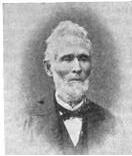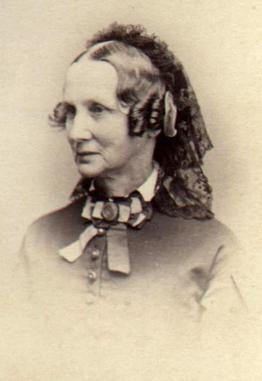Nathan Brown (missionary) facts for kids
Quick facts for kids
Rev. Nathan Brown
|
|
|---|---|

Rev Nathan Brown
|
|
| Born | June 22, 1807 |
| Died | January 1, 1886 (aged 78) Yokohama, Japan
|
| Nationality | American |
| Alma mater | Williams College |
| Occupation | American Baptist missionary to India and Japan |
| Known for | Contribution to Assamese language and literature |
Nathan Brown (Assamese: নাথান ব্ৰাউন; June 22, 1807 – January 1, 1886) was an American Baptist missionary. He traveled to India and Japan. He was also a Bible translator and an abolitionist, meaning he worked to end slavery.
Brown is well-known for his important work on the Assamese language and its grammar. Around 1843, while living in Sibsagar, he started translating the New Testament into Assamese. He published this translation in 1848. He also published other books, including one about Jesus Christ in 1854.
He worked with other missionaries to translate prayers. His book, Grammatical Notices of the Assamese Language, came out in 1848. In 1846, he and his friend Oliver Cutter started Orunodoi, which was the first newspaper in Assamese. Brown also helped publish works by older Assamese scholars. Because of his efforts, many people see him as a champion of the Assamese language and its literature.
Contents
Early Life and Missions in Asia
Nathan Brown was born in New Ipswich, New Hampshire. He went to Williams College and was the top student in his class. In 1830, he married Eliza. They both became missionaries.
Their first mission was in Burma. Brown had planned to translate the Bible into the Burmese language. However, he soon moved to India, specifically to the region of Assam. He worked there with Oliver Cutter and Miles Bronson.
Helping the Assamese Language
In 1848, Brown published a grammar book for Assamese. He also finished his Assamese translation of the New Testament. He noticed that the Assamese Bible available at the time used many words from Bengali and Sanskrit. This made it hard for local people to understand.
So, Nathan Brown worked with Pandit Atmaram Sharma to create a new translation. This version used simple and pure Assamese words. For many years, the British government in India considered Assamese to be part of Bengali. Brown's publications, like his Assamese-English dictionary and grammar book, helped the language get recognized again. He also worked with Hemchandra Barua, who learned at Brown's school.
Fighting Against Slavery
In 1850, Nathan Brown returned to America. He joined his brother William in the growing movement to end slavery. This movement was called Abolitionism. Brown wrote a story called Magnus Maharba and the Dragon. In this story, he used the pen name Kristofer Kadmus. The story was a satire, meaning it used humor to criticize slavery.
The name Cadmus comes from an old Greek story. Cadmus was known for traveling and bringing new ideas, like the alphabet, to Greece. In the myth, Cadmus killed a dragon and planted its teeth. From these teeth, armies grew. The survivors then built a city of learning.
Brown and other missionaries believed that creating alphabets for every language was important. This would help them translate the Bible for everyone. The printing presses and schools they set up also helped local languages and cultures grow.
After returning from Assam, Nathan Brown gave speeches against slavery in Boston. The fight against slavery eventually led to the American Civil War. Brown thought deeply about whether using violence was the right way to end slavery. He explored these ideas in his book Magnus Maharba.
Missionary Work in Japan
After the Civil War ended, Nathan Brown became interested in Japan in 1868. Japan was just opening up to the Western world. Brown started by talking with Japanese students who came to America to study. He saw this as a chance for cultural exchange.
He even wrote another satirical story. This one showed America through the eyes of a Japanese student. It criticized how much Americans focused on money instead of spiritual things. One Japanese student, whom Brown helped get into a school, later became an important admiral in the Japanese Navy.
Brown's first wife passed away in 1871. In 1872, he married again and went back to missionary work. This time, he traveled to Japan. He joined Jonathan Goble, who was the first Baptist missionary there. Together, they built the first Japanese Baptist church in Yokohama in 1873.
Brown also worked with a Japanese scholar named T. Kawakatsu. They created a Japanese-language Bible. They based it on the oldest known Greek writings. Brown printed thousands of copies using Hiragana. This was so that less educated people, who might not understand the more complex Kanji characters, could still read the Bible. Nathan Brown died in Yokohama in 1886.
See also
- Assamese Language Movement


